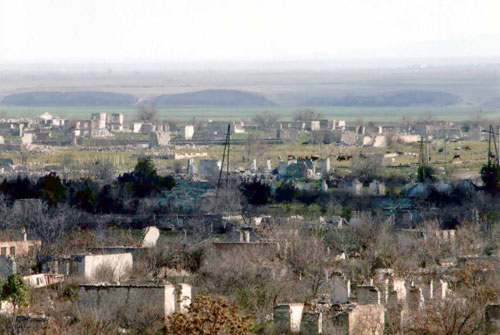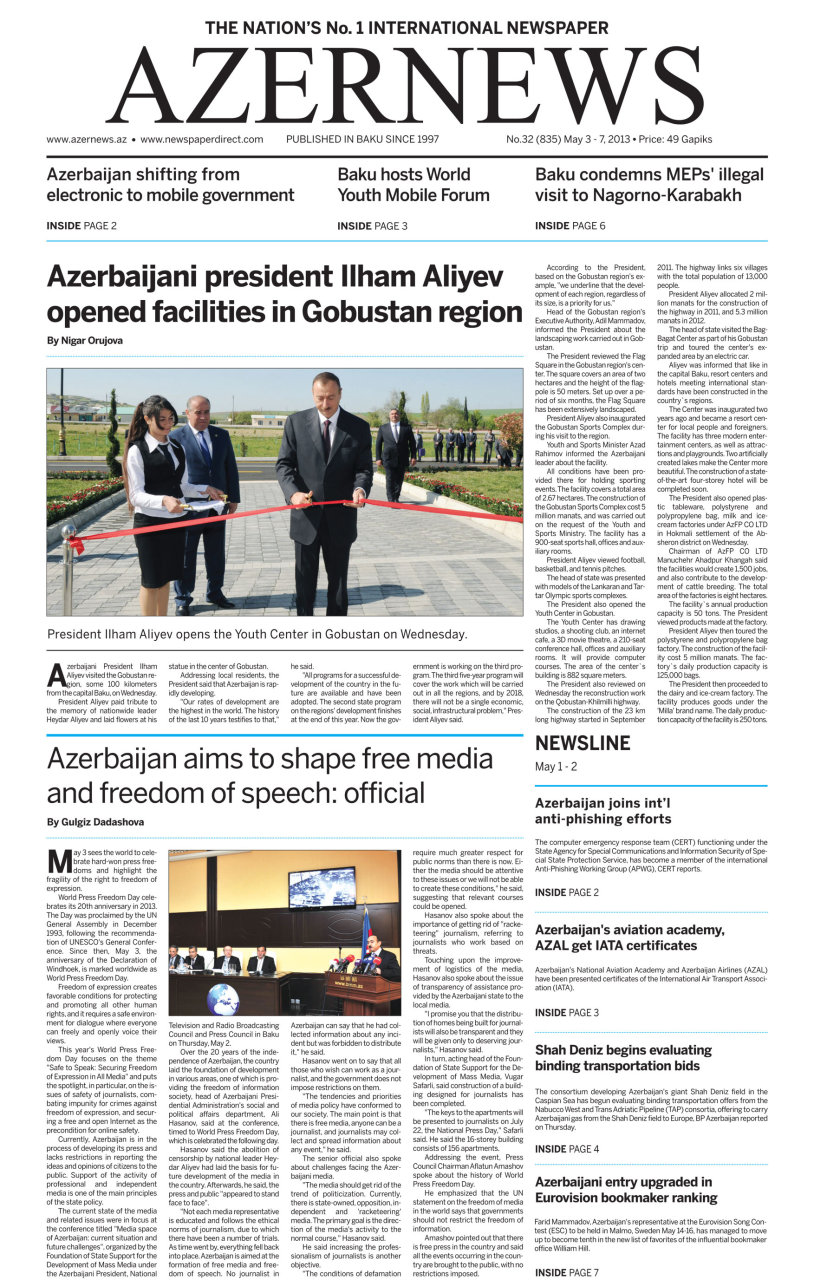By Sara Rajabova, Azernews
The environment and abundant natural resources of the Armenian-occupied Azerbaijani territory have been damaged, environmentalists warn. The rivers and lakes there are polluted, trees have been felled and forests burnt down, and cultivable lands are damaged -- all this can be labeled as "green genocide" against Azerbaijan and its nature.
Almost 1.7 million hectares of the Azerbaijani territory was occupied as a result of the Armenian invasion in 1988-1993.
The lands occupied by Armenia include the mountainous zone of the Lesser Caucasus and Azerbaijan's largest forest regions. Twenty-five percent of the overall forestry cover of Azerbaijan unfortunately ended up being under occupation.
According to the Ministry of Ecology and Natural Resources of Azerbaijan, more than 460 species of wild trees and shrubs grow in the occupied territories. 70 of them are endemic species and don't grow naturally in any other place of the world. Qarachohra, ayifindighi, Araz pine, yalangoz, eastern sycamore, pomegranate, forest grape, pirkal, shumshad, elder pine, date, willowleaf pear and other tree species have been depleted in the occupied territories and currently are about to be effaced from the treasures of world flora.
Currently, valuable tree species and other species of biodiversity are still plundered in the territories of Basitchay State Nature Reserve, Arazboyu State Nature Sanctuary, Qaragol State Nature Reserve, Lachin region's State Nature Sanctuary, Qubadli region's State Nature Sanctuary and Dashalti State Nature Sanctuary. 247,352 hectares of forest area, as well as over 13,197 hectares of valuable forest areas, 152 monuments of nature and 5 geological sites remain in the occupied territories. The Armenians residing in the occupied territories have destroyed most of the significant natural monuments.
The ayifindigi trees in the occupied Kalbajar region stretching over a 968 ha area and included in the "Red Book" are being cut and sold abroad. More than 4,000 plant species exist in the territory of the region, and nearly 200 of them are considered medicinal plants and are mass destroyed and carried abroad by foreign companies. This is causing eradication of plants in those territories.
Another serious environmental problem in the occupied territories is related to water resources. The natural water sources crossing the occupied territories are being subjected to excessive contamination by the Armenians.
Using water of the Azerbaijani rivers, whose sources are located in the territories occupied by Armenia, is extremely dangerous not only for domestic but also for agricultural use, according to the Institute of Microbiology of the Azerbaijan National Academy of Sciences.
Excessive pollution of Okhchuchay and Agstafachay rivers in the Armenian-occupied Azerbaijani territory poses great danger to the existence of the organic world, as these basins are confluents of Araz and Kura Rivers.
Besides, Armenia drains off its contaminated water directly into the Araz River.
Also, a great deal of environmentally significant lakes in the occupied Azerbaijani territories incur an anthropogenic impact. Seven large and small relict lakes remain under the occupation.
The Sarsang water reservoir, which is under the Armenian control, is not available for seven regions now, resulting in irrigation problems, eradication of greenery, and other serious environmental problems.
Besides, the invaders frequently set fire to the frontline regions, which causes big problems for the residents and damages agriculture of these areas.
The territories of Agdam, Fizuli, Jabrayil, Terter and Khojavand regions, which are situated on the troops' contact line, were set ablaze deliberately by the Armenian invaders. The fire flames encircled thousands of hectares of land controlled by the Armenians, as well as spread over other territories and considerably damaged the nature there. A total of 96,000 ha of pastures, hayfields and greeneries as well as forest fields were destroyed, and fertile soil surface became useless due to the perpetration of arsons by the Armenian soldiers in the occupied territories of Azerbaijan.
Scientists believe that the many-centuries-old fertile soil layer has already been depleted or is under the threat of destruction, due to the systematic pollution of soil and watershed in the territories of Azerbaijan occupied by Armenia, and hydrobiological environment has reached a mark of an environmental crisis.
According to approximate estimates Azerbaijan has sustained damages worth billions of manats due to the destruction of natural resources of the country and moral damage inflicted to the Azerbaijani internally displaced persons.
At a time when the solution of the environmental problems is of great importance, international organizations must prevent such crimes against nature.
Official appeals denouncing the vile deeds of the Armenian invaders targeting nature and humankind in the occupied territories have been sent to a number of European and international and environment groups, and the Ministry of Ecology and Natural Resources brought to the attention of the international organizations the importance of taking urgent measures in this regard.
Thus, the "green" genocide in the Armenian-occupied territory threatens not only Azerbaijan, but the entire region.
Armenia occupied over 20 percent of Azerbaijan's internationally recognized territory, including Nagorno-Karabakh and seven adjacent regions, after laying territorial claims against its South Caucasus neighbor that had caused a lengthy war in the early 1990s.
The UN Security Council has adopted four resolutions on Armenia's withdrawal from the Azerbaijani territory, but they have not been enforced to this day.








